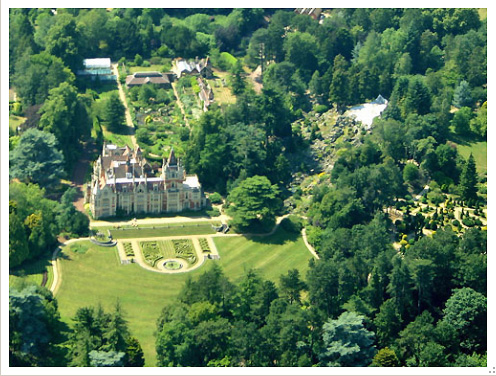|
Mainly Music Oriented
Clientele In Real Realty: Is how Alvin Lee and George Harrison became next
door neighbours. Rumour has it, that their estates had adjoining
backyards.
Perry
Press, who was the founder of Pereds, was a close friend of the following:
The
Beatles, Pink Floyd, Led Zeppelin, Ronnie Wood (Rolling Stones), Eric
Clapton, Van Morrison, Rod Stewart, Paul and Linda McCartney, Peter
Frampton, George and Pattie (Boyd) Harrison, Robert Plant, Jimmy Page, Peter
Grant, Richard Harris, Alvin Lee, Ric Lee, Leo Lyons, John Entwistle, Roger
Daltry and Keith Moon…the list goes on and on.
“A few
of my musician friends had gone to America and come back with some dollars
in their pockets, so they were now in a position to consider buying a house
for themselves, rather than paying rent”. On the one hand, this was a good
time for affluent, hairy upstarts to enter the upper echelons of the
property market, particularly outside of London, where an increasing number
of distinguished old and historical houses were proving to be too expensive
for their now elderly owners to maintain any longer. On the other hand,
reticence or just plain embarrassment would often inhibit these down at the
heel proprietors from putting their country piles on the market. Back in the
early 1970’s – “Almost nobody had any money then, except for the young
creative, and overly ambitious types. The young ones who did have a good
amount of disposable income at hand, didn’t have an appreciation for the
splendour and joys of becoming a homeowner. If they were even the exception
to that rule, they were in no way prepared to undertake the extensive amount
of upkeep and costly maintenance involved on a yearly basis. What some
thought of as glorious seclusion, with the peace and quiet that goes along
with that cultural class privilege, others considered it to be,
unacceptable, too remote and too boring.
Alvin Lee
It was
Alvin Lee who was the first to lead the way, out into the country, running
from the city as he wrote. The first purchase that Perry completed as a
buyer agent, was when he hunted down a house known as “Robin Hood Barn” that
was near Wokingham for Alvin.

Alvin
Lee by then, was returning to England as a certified guitar god hero, having
conquered the American, heart and soul, by way of the 1969 Woodstock
Festival. Ten Years After made their mark and never had to look for work or
fame ever again. As Alvin was aptly born and bred in Nottingham. It wasn’t
only Alvin who wanted to advance is lot in life, but the other members of
the band also wanted to be part of the country lifestyle and bought homes in
the countryside. Ric Lee had a big “Manor House” and Leo Lyons had horses,
wagons and a farm of his own. Their needs were promptly fulfilled, in
carefully selected areas within the Chilterns.
George Harrison
In a
special request Perry placed an ad in the personal column of The Times
soliciting a response from anyone wishing to part with their large secluded
country house of character.
The
search was on to find his good friend George Harrison the perfect domicile,
an estate like no other that would suit George’s desire for the unique,
functional, beautiful, exotic and whimsical. George and Pattie had outgrown
George’s psychedelic bungalow in Esher and very much wanted to move to
somewhere a bit more spacious and defiantly private and secluded. It just so
happened that that a community of nuns replied to the request, as they were
contemplating selling their precious and prized convent. The convent was an
old “High
Victorian Gothic Folly” – with lakes and extensive grounds right on the edge
of Henley- on – the – Thames. Called “Friar Park” which duly became George
Harrison’s main home. The gardens became his magnificent obsession, for the
remainder of his life.

There
was a severe economic down-turn in the early 1970’s which caused a great
deal of major belt-tightening elsewhere, but this in no way affected the
earnings of Britain’s major rock stars who were at the top of their game.
Alvin Lee’s “Hookend
Manor”
Hookend Manor, was a house near Henley that was originally found for Alvin
as a replacement, when his “Robin Hood Barn” was sold to a land developer
for a kings ransom.
Alvin
bought Hookend Manor in 1972 and sold it to David Gilmour in 1980.
John
Entwistle – aquired his home from a very ince Jewish pig farmer.
“Quarwood at Stow-on-the-Wold” in Glouestershire.
Roger
Daltry – bought a lovely old ironmaster’s estate in East Sussex where Roger
was able to set up the trout farm that he always wanted.
Keith
Moon – who readily saw the merits of houses that Perry selected, there was
merely the risk, that while house hunting, Moonies Pink Rolls Royce would
unexpectedly be diverted while in route, and end up at a topless bar in St.
James. In 1971, Keith did finally purchase a home from Peter Collinson, who
was the film director responsible for the original version of “The Italian
Job” and who blew up a Victorian House at St. Anne’s Hill – filming the
dramatic demolition for a fee, that would amply cover the expected fine, for
failing to secure the proper planning board permit and permission. He
subsequently rebuilt it in contemporary style as a series of pyramids that
he considered to be virtually indestructible. But needless to say, Keith
Moon proved him wrong about on that account.
Keith
Moon’s “Tara Estate” in Chertsey, England.
|